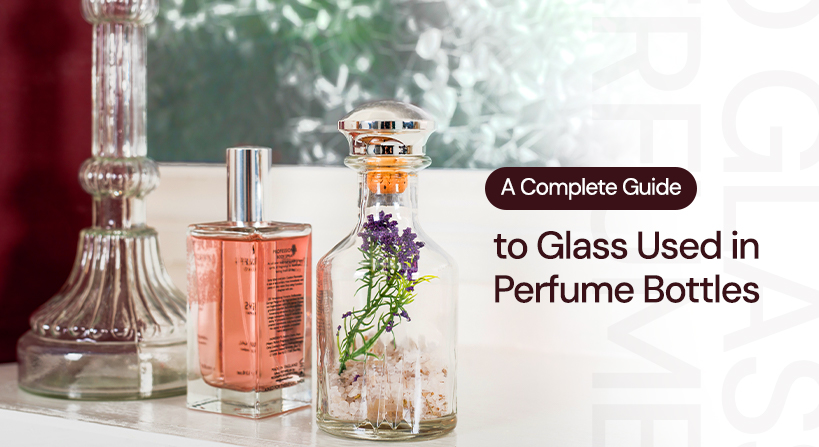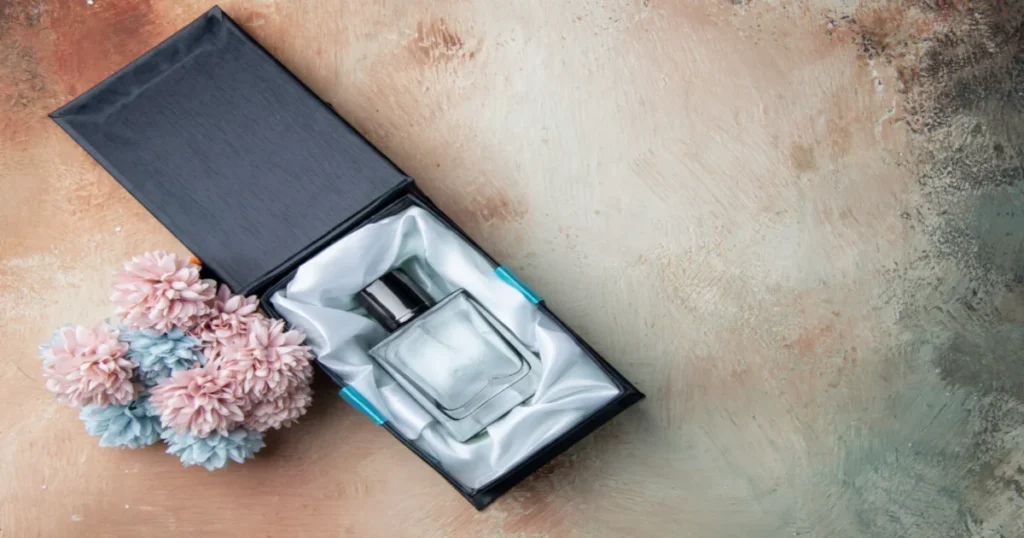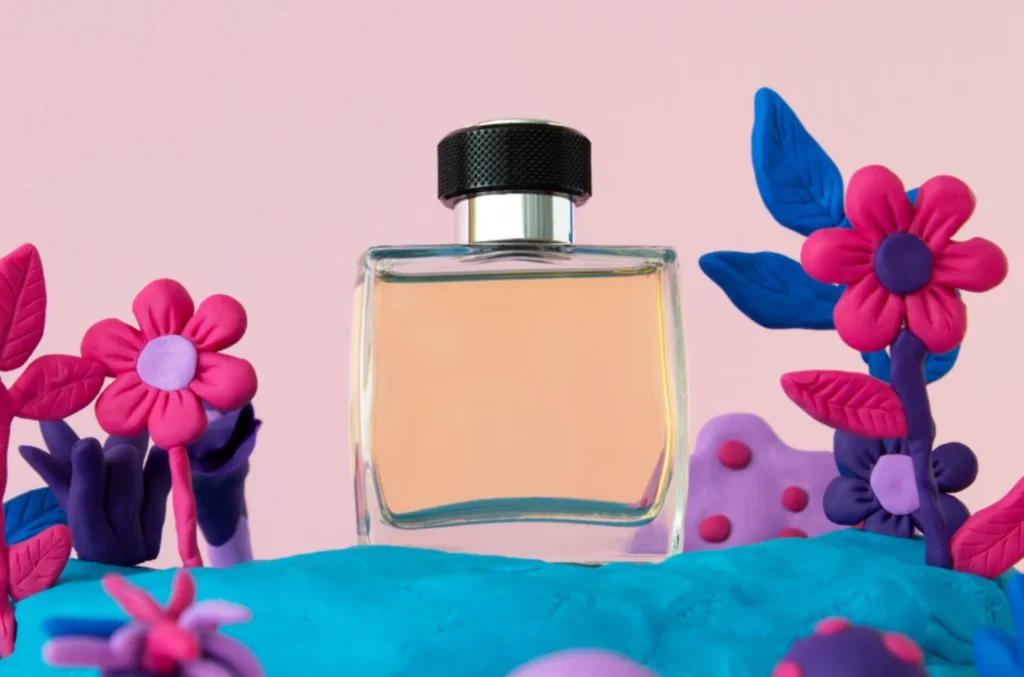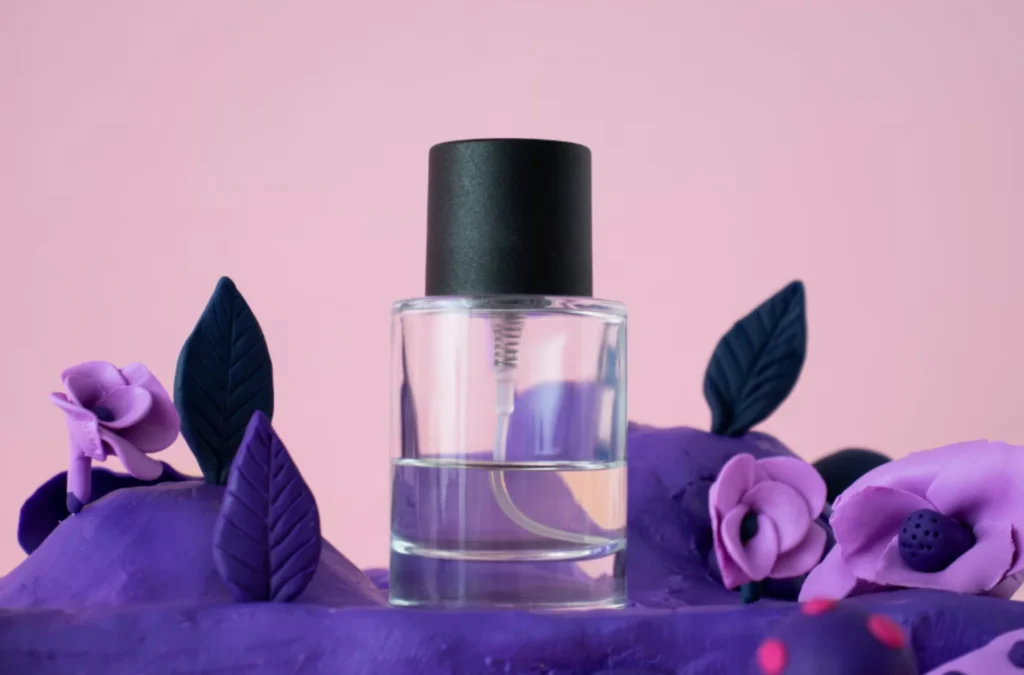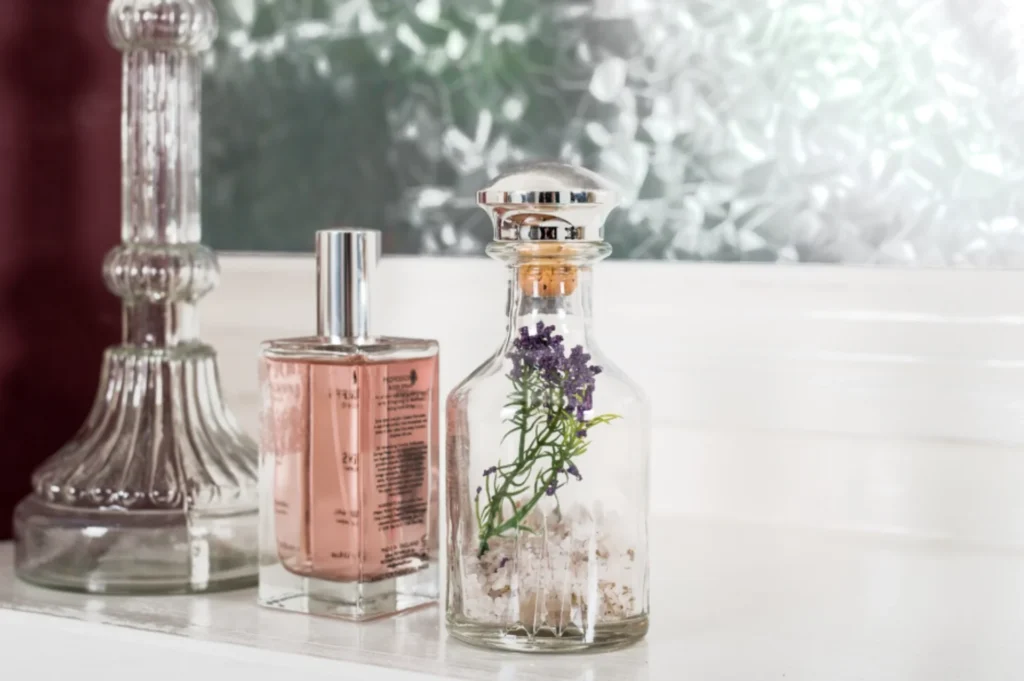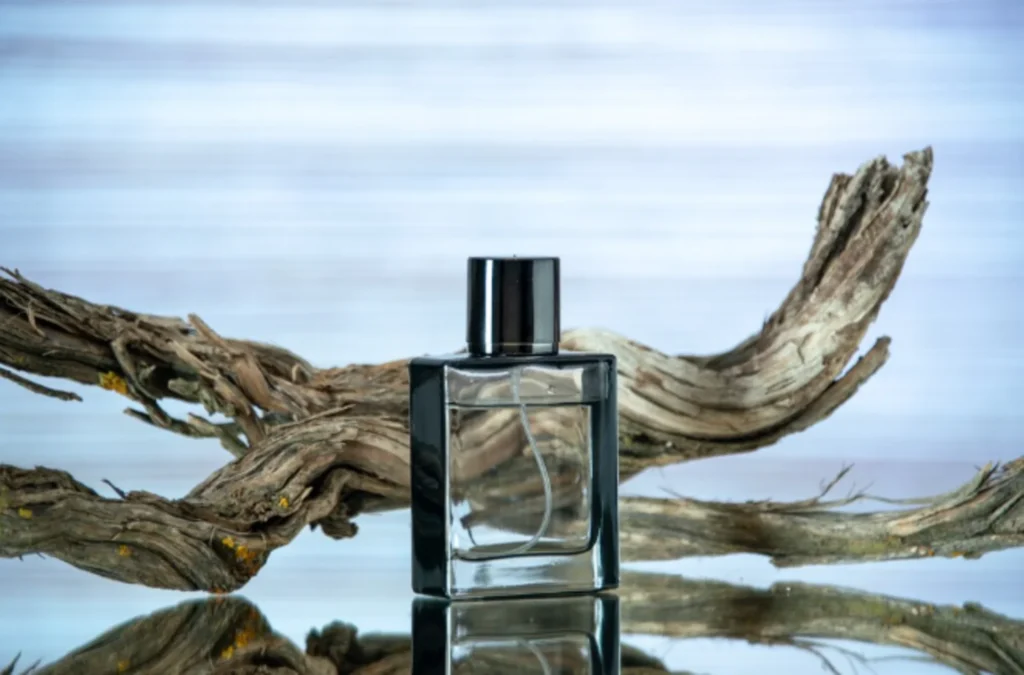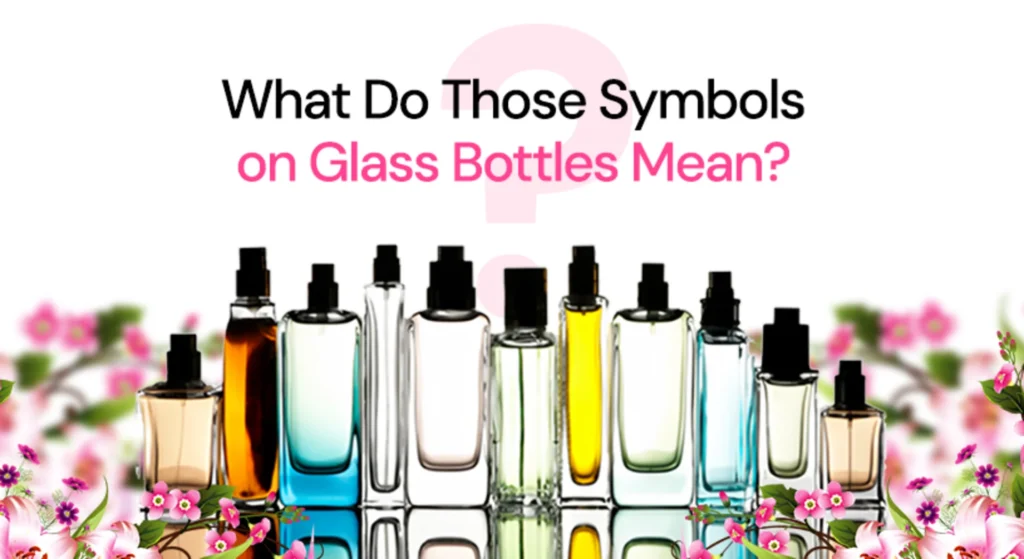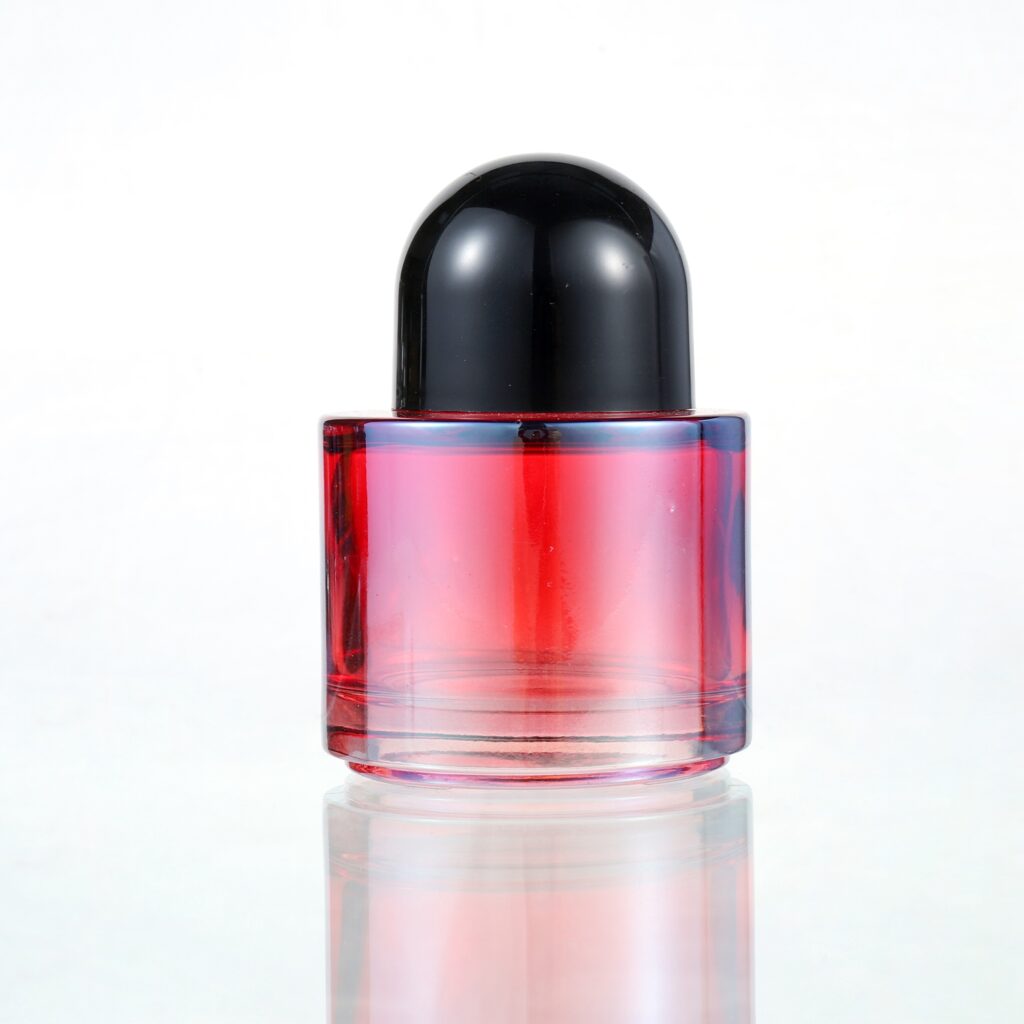Did you know that over 70% of consumers judge a perfume by its bottle before even smelling it? Packaging shapes perception, communicates luxury, and can determine a fragrance’s success.
Glass is central to this experience. The right bottle preserves the scent, elevates the brand, and leaves a lasting impression. From sleek modern designs to ornate crystal flacons, glass has been the preferred material for centuries.
This guide covers everything about perfume bottle glass, including types of glass, how bottles are made, symbol meanings, design trends, sustainability, and innovations shaping the future of fragrance packaging.
Related Article: The Complete Guide to Perfume Branding
What Type of Glass Is Used for Perfume Bottles?
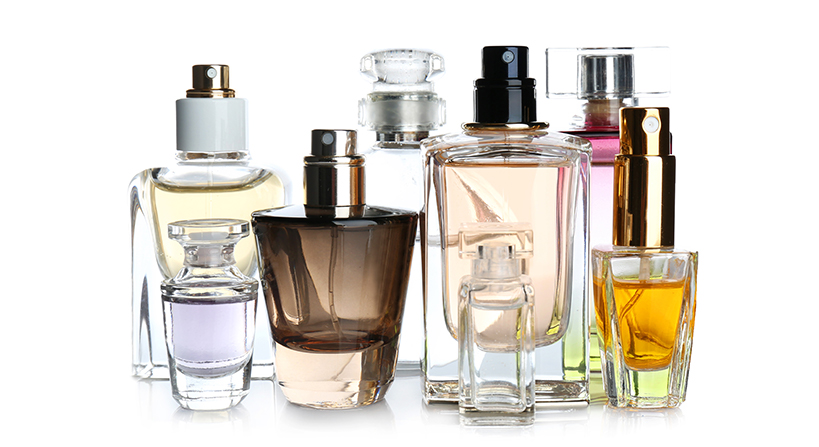
Perfume bottles are crafted from a variety of glass types. Each type offers unique advantages depending on the design, fragrance formula, and brand positioning.
Soda-Lime Glass
Soda-lime glass is the most widely used type for perfume bottles. It is cost-effective, versatile, and suitable for mass production. Brands often use it for clear bottles, coloured finishes, and decorative coatings. Despite being the most common, soda-lime glass can still convey elegance with the right design and finish.
Borosilicate Glass
Borosilicate glass is more durable and heat-resistant than soda-lime glass. It is less likely to crack or break, making it ideal for premium fragrances and travel bottles. Borosilicate is often used in smaller, delicate bottles where strength is crucial without sacrificing clarity.
Crystal and Lead-Free Crystal
Crystal bottles are synonymous with luxury. The high clarity, refractive brilliance, and weight of crystal glass give bottles a premium look and feel. Today, most brands opt for lead-free crystal, which ensures safety without compromising on elegance. Crystal allows for heavy bases and intricate shapes, making it ideal for collector editions and limited releases.
Recycled and Eco-Friendly Glass
With sustainability a growing concern, recycled glass has become a popular option. Using post-consumer glass reduces the carbon footprint of production and appeals to eco-conscious consumers. Recycled glass may have subtle colour variations, which can add character and uniqueness to each bottle.
Frosted, Coloured, and UV-Protective Glass
Frosted and coloured glass not only enhances the bottle’s visual appeal but also protects the perfume from light. UV rays can degrade fragrance oils, altering the scent over time. Frosted or tinted bottles preserve the fragrance and provide brands with opportunities to create a distinctive aesthetic.
Related Article: Different Shapes of Glass Perfume Bottles and Why They Matter
The Manufacturing Process of Perfume Bottle Glass
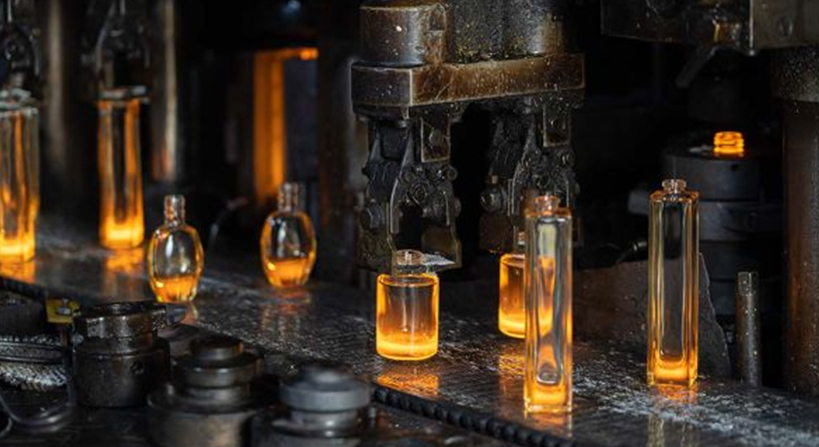
Creating a glass perfume bottle involves a combination of science, skill, and artistry. The production process varies depending on whether the bottle is handcrafted or mass-produced.
Raw Materials Used
The primary ingredients are silica sand, soda ash, and limestone. These materials are melted at extremely high temperatures, transforming into molten glass. Other additives may be included to enhance clarity, colour, or durability.
Blow-and-Blow vs. Press-and-Blow
Two main techniques shape glass bottles:
- Blow-and-blow: This method uses air to expand molten glass into a mould. It is ideal for bottles with narrow necks and delicate shapes.
- Press-and-blow: Here, molten glass is pressed into a preliminary shape before being blown into its final form. This is used for bottles requiring thicker walls or heavier bases.
Handcrafted vs. Industrial Production
Luxury brands often rely on hand-blown bottles. Skilled artisans create intricate designs that machines cannot replicate. Industrial production, however, allows for uniformity, efficiency, and cost-effectiveness, which suits larger brands and mass-market products.
Decoration: Frosting, Lacquering, Engraving, Coating
After shaping, bottles are decorated to reflect the brand’s identity:
- Frosting: Adds a soft texture and protects the fragrance.
- Lacquering: Enhances durability and aesthetic appeal.
- Engraving: Creates a tactile, artistic feel.
- Coating or Metallisation: Offers metallic finishes or shimmer for a luxurious look.
Every decorative choice affects the bottle’s usability, recyclability, and overall brand messaging.
The Meaning Behind Symbols on Glass Bottles
Small marks on perfume bottles are more than decoration; they convey important information.
Recyclable Glass Symbol
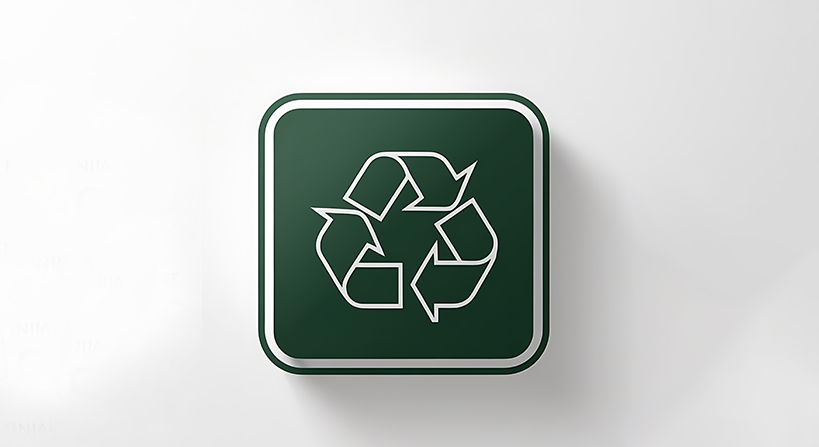
This shows that the bottle can be recycled, making it easier to dispose of it responsibly.
Material/Resin Code
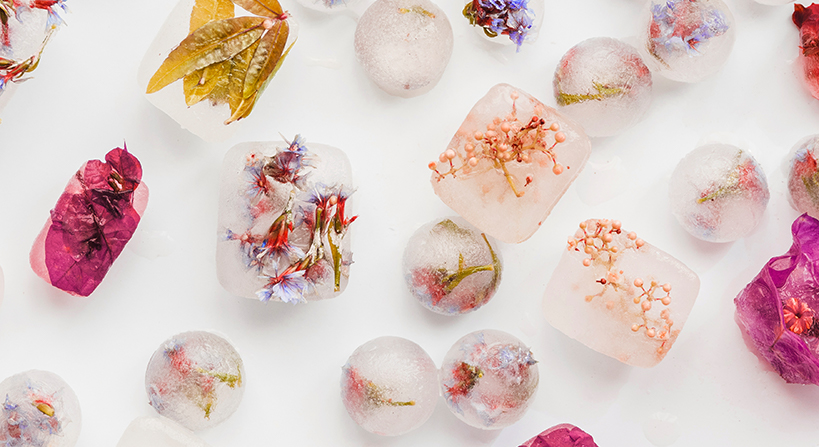
If a bottle has plastic parts, this code tells you what type of plastic it is, so it can be recycled correctly.
Batch and Lot Numbers
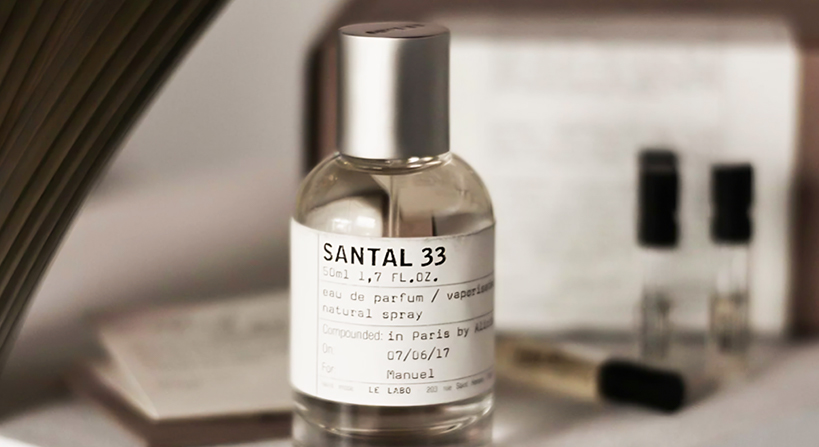
These numbers let manufacturers track each production batch. They’re important for quality control and verifying authenticity.
Capacity Markers (ml/fl oz)
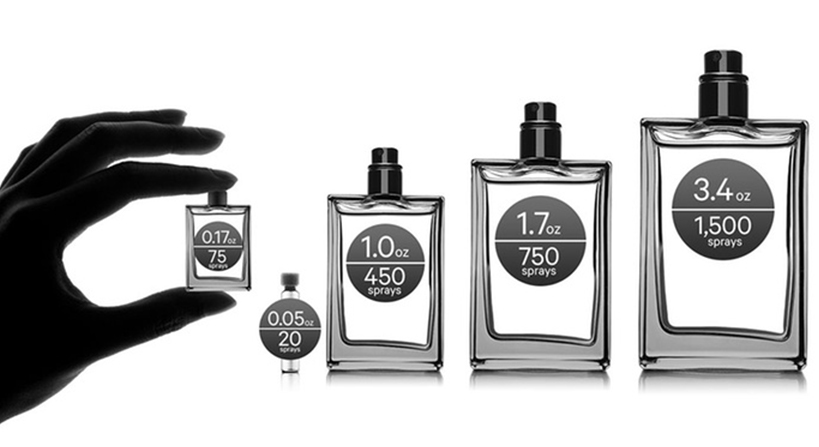
These markings show exactly how much perfume is in the bottle, so you know what you’re buying.
Safety and Compliance Symbols
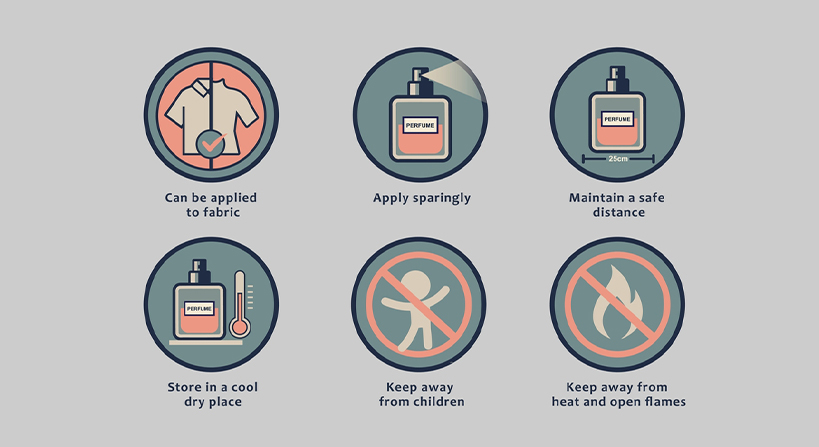
Some bottles carry marks to show they meet safety and international regulations, especially for export products.
Why Perfume Brands Prefer Glass Over Plastic or Metal
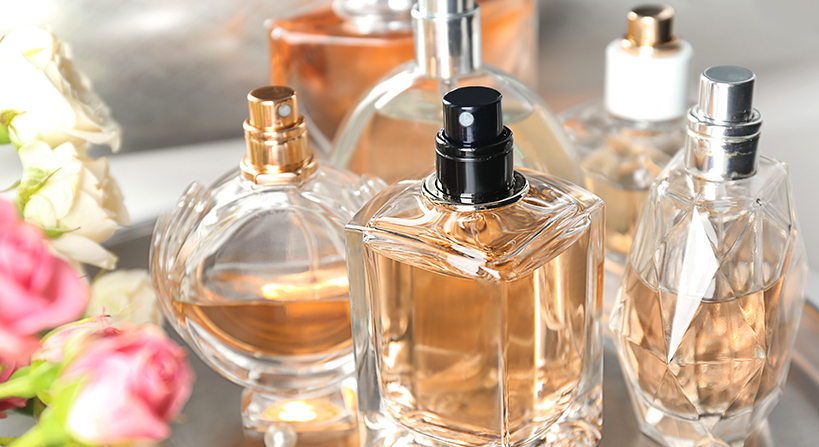
Glass is chosen for perfume bottles for several reasons:
Aesthetic Value
Glass exudes luxury, whether clear, coloured, or textured. Its reflective properties add visual depth, elevating the overall appeal.
Luxury and Brand Positioning
High-end brands rely on glass to convey exclusivity and sophistication. The feel of a glass bottle in the hand adds to the perception of value.
Chemical Stability for Fragrance
Unlike plastic or metal, glass does not react with fragrance oils, ensuring the scent remains pure and long-lasting.
Custom Shapes and Moldability
Glass can be shaped into intricate, custom designs, enabling brands to stand out with unique bottle silhouettes.
Sustainability and Recyclability
Glass is eco-friendly and recyclable, aligning with consumer demand for sustainable luxury products.
Characteristics of High-Quality Perfume Glass
A premium perfume bottle exhibits specific characteristics:
Purity and Clarity
Top-quality glass is free from bubbles, streaks, and unwanted colour tints. This ensures the bottle looks flawless, highlights the perfume’s colour, and gives a sense of sophistication. Clear glass also allows consumers to see exactly how much perfume is left.
Scratch-Resistance
A durable glass surface resists everyday scratches and scuffs. This is especially important for luxury bottles, as scratches can make the packaging look cheap or worn, diminishing the perceived value of the fragrance.
Weight: Heavy Bottoms and Double Walls
Luxury bottles often have heavier bottoms or double walls. This gives the bottle a premium feel in the hand, adds stability, and demonstrates high craftsmanship. It also prevents tipping and spills while enhancing shelf presence.
Transparency and Light Protection
Glass can be clear, frosted, tinted, or even UV-protective. Clear bottles showcase the perfume, while tinted or frosted glass protects the fragrance from sunlight, which can break down essential oils and affect scent longevity. Some brands balance both aesthetics and protection with subtle colour gradients or coatings.
Shatter Resistance
High-quality glass is tempered or reinforced to reduce the risk of breaking. This is crucial during shipping, handling, or even daily use, preventing accidents and product loss. Some luxury bottles also use thicker bases and walls for added durability.
Design Trends in Glass Perfume Bottles
Perfume bottle design is constantly evolving, balancing aesthetics, functionality, and brand identity. Here are the key trends shaping modern glass bottles:
Minimalist Luxury
Clean lines, clear glass, and simple labels create an elegant, modern look. Minimalist designs appeal to consumers who prefer sophistication without excess.
Vintage Revival
Nostalgic designs inspired by antique bottles are making a comeback. Collectors and enthusiasts love these classic styles for their charm and historical appeal.
Coloured and Frosted Glass
Adding colour or a frosted finish gives bottles a distinctive look while protecting the fragrance from sunlight, which can degrade delicate scents.
Sculpted and Artistic Bottles
Brands are experimenting with sculptural and artistic shapes to create unique, eye-catching bottles. These designs help reinforce brand identity and make the product stand out on shelves.
Refillable and Sustainable Designs
Eco-conscious consumers are driving demand for refillable bottles. Refillable designs reduce waste and support sustainable packaging initiatives.
3D Printing and Personalisation
3D printing allows designers to create unconventional shapes and bespoke bottles for limited editions. This trend enables greater creativity and personalisation, offering consumers a one-of-a-kind fragrance experience.
Related Article: How 3D Technology is Changing Perfume Bottle Designs
Sustainability & Recycling of Perfume Bottle Glass
Sustainability is becoming a major focus in the perfume industry. Consumers and brands alike are seeking ways to reduce waste while maintaining luxury standards.
Challenges with Decorated Glass
Bottles with metallic coatings, mixed materials, or heavy embellishments are harder to recycle. These decorations often require special processes, making disposal more complex.
Refillable Bottles and Eco-Refills
Refillable designs are gaining popularity. Refillable bottles, replaceable inserts, and eco-refills let consumers enjoy their favourite fragrances while cutting down on waste.
Recycled Glass Usage in New Packaging
Many brands now use recycled glass to craft new bottles. This reduces environmental impact without compromising the look or feel of luxury packaging.
Circular Production Practices
Some companies adopt circular production methods, efficiently reusing materials to create new bottles. This approach helps reduce resource consumption and supports sustainable packaging goals.
Future Innovations in Glass for Perfumes
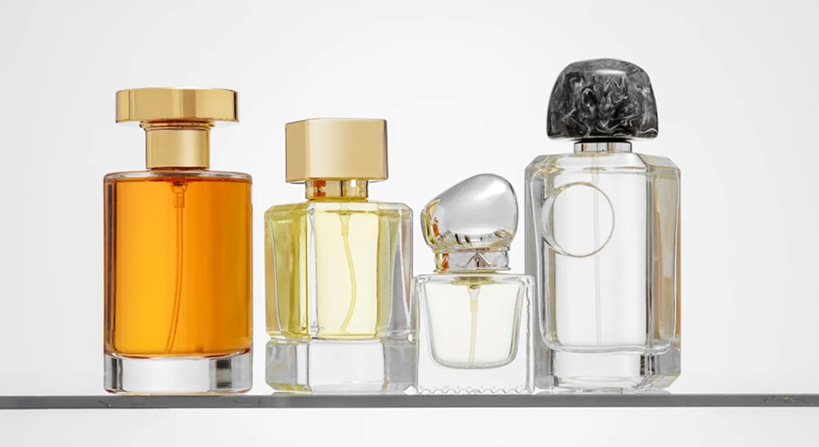
The perfume industry is embracing innovation, using new glass technologies to combine luxury, functionality, and sustainability.
Smart Glass Packaging
Some bottles are now equipped with NFC chips or QR codes. These can guide customers on refills, verify authenticity, or provide product information, enhancing the overall experience.
Lightweight but Strong Glass
Advanced manufacturing allows for thinner yet durable glass. These bottles are easier to handle, reduce shipping weight, and lower the carbon footprint without sacrificing quality.
Eco-Friendly Coatings
New coatings improve recyclability and reduce environmental impact. They protect the glass while keeping it easier to recycle.
Biodegradable and Hybrid Materials
Some brands are experimenting with hybrid glass blends that combine traditional glass with biodegradable components. This reduces waste while maintaining a premium feel.
Discover Olila Perfume: Where Every Design Tells a Story
A perfume bottle does more than hold fragrance; it tells a story. At Olila, we partner with fragrance brands to craft elegant, premium bottles that reflect the personality of each scent.
Why Work with Olila?
- We design custom bottles that perfectly match your brand’s style.
- We prioritise sustainability, using recycled glass and refillable options.
- Our global production ensures attention to detail at every stage.
- We guide you from initial design concepts to final delivery, making the process seamless.
Whether you’re an emerging perfumer or a renowned global label, Olila helps create packaging that captivates. Your perfume deserves a bottle that communicates luxury and identity before the first spray.
Final Thoughts
Glass is not just a vessel for perfume; it is a central part of the fragrance experience. The right glass protects the scent, reflects brand identity, and creates a sense of luxury. From traditional soda-lime and crystal to modern, eco-friendly and UV-protective glass, there is a type of glass for every design and brand vision.
As sustainability and innovation continue to influence the industry, perfume bottles are evolving to become more functional, eco-conscious, and artistic. Choosing the right glass is a vital decision for any perfume brand and will remain at the heart of fragrance packaging for the foreseeable future.


